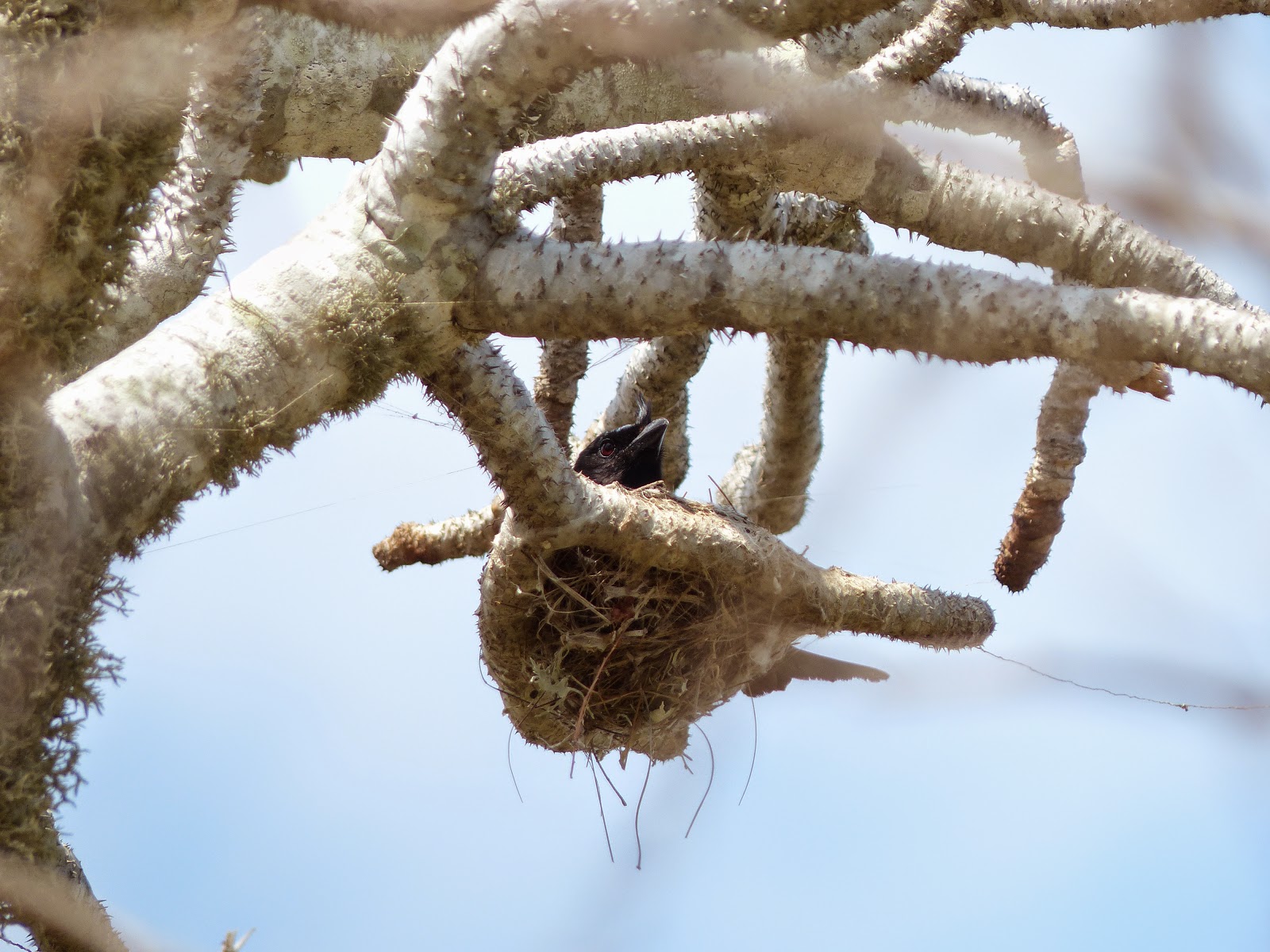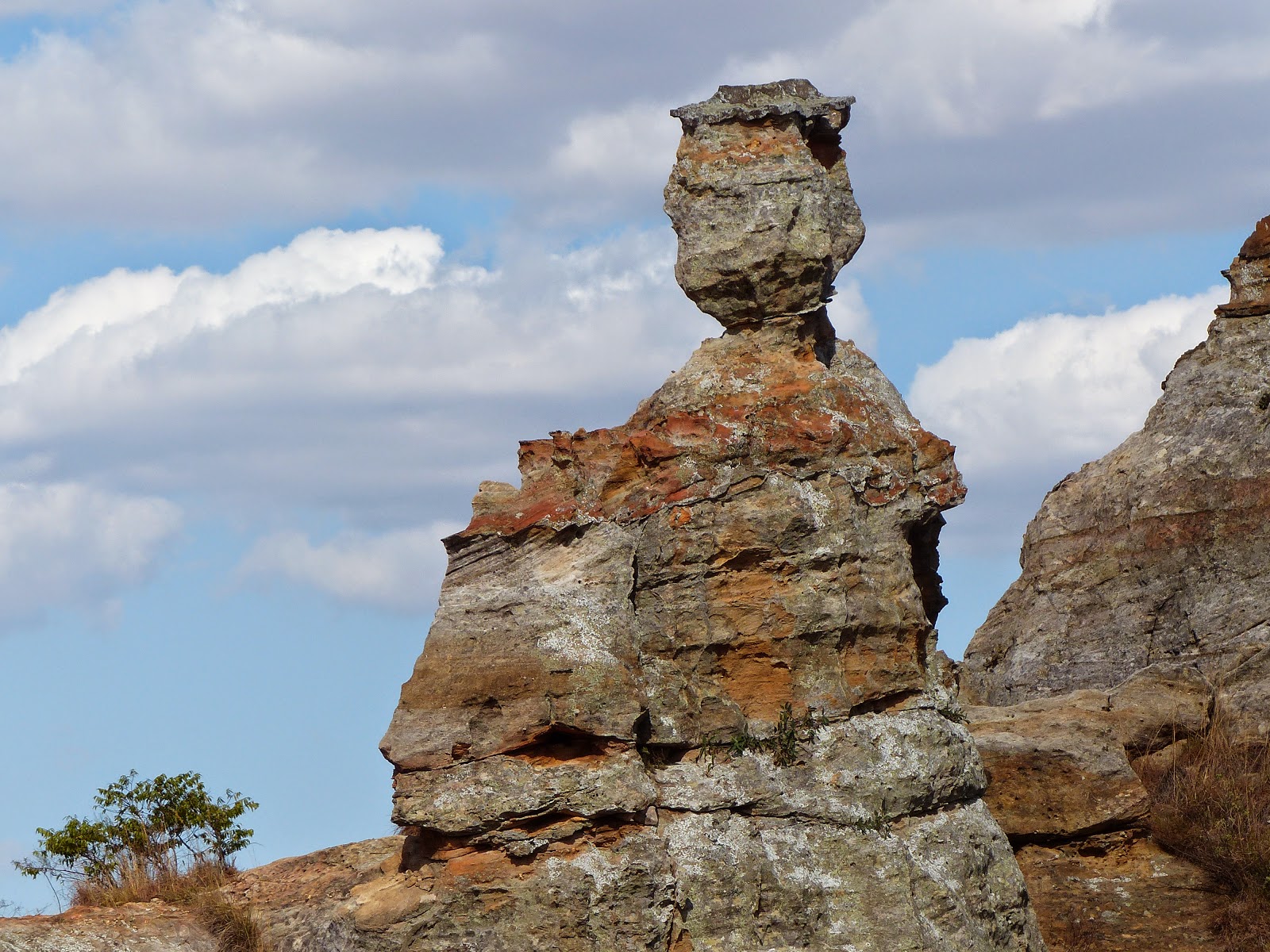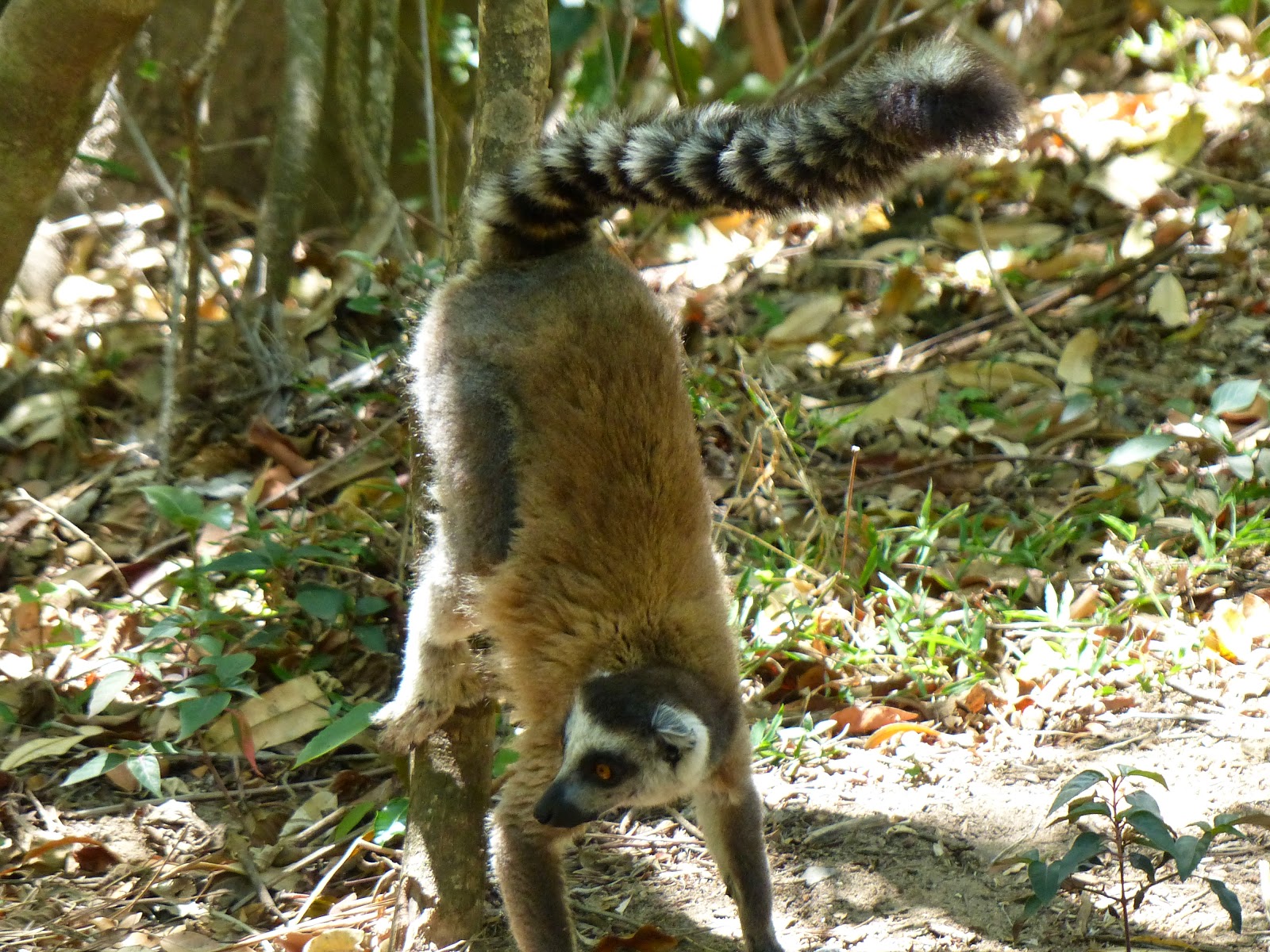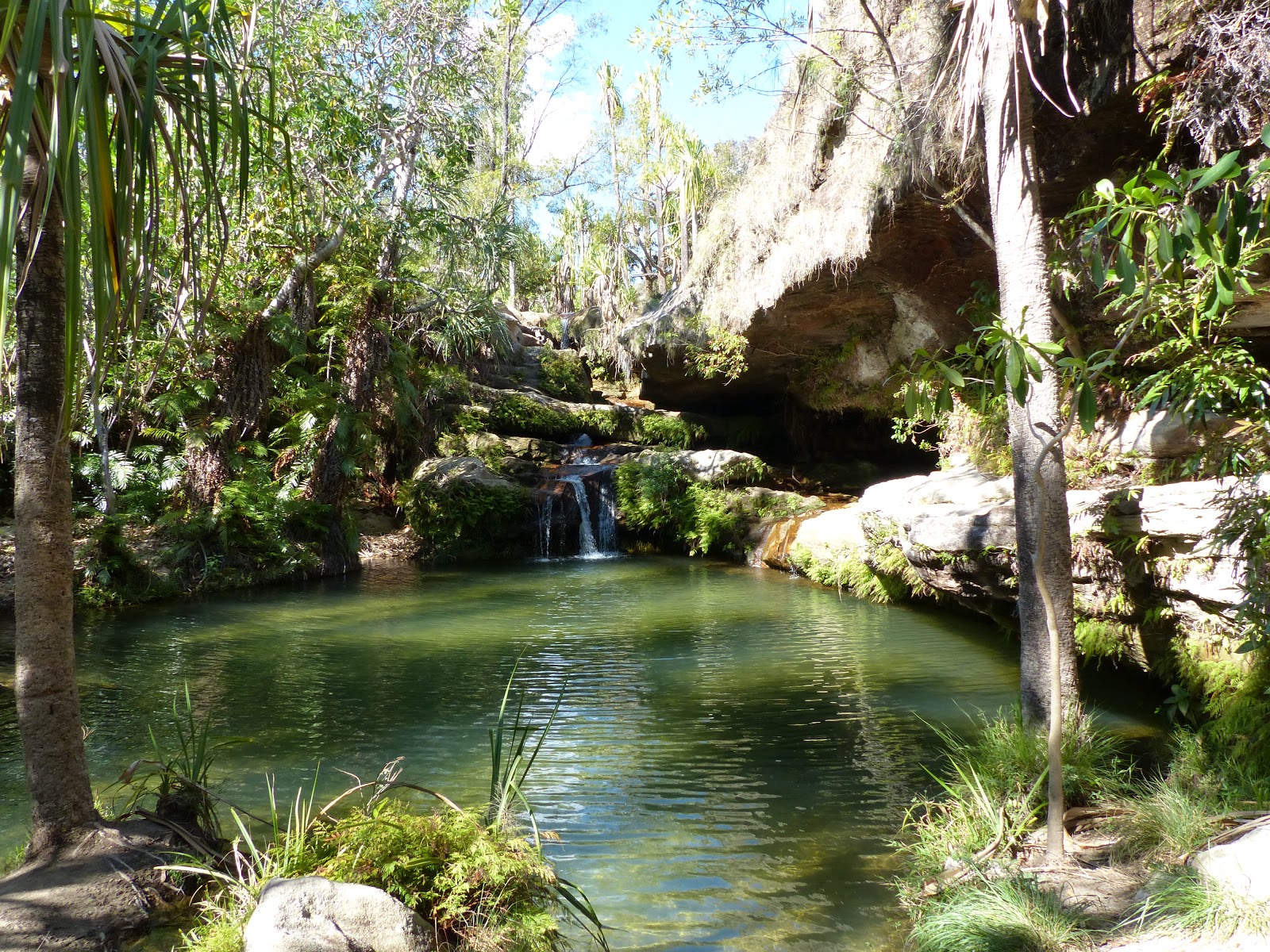For our fifth trip to
Madagascar we decided to concentrate on a region we'd never been to - the south-west. We flew to the region's capital
Tulear, and while the provincial town itself is not very interesting for visitors (other than as a dusty transit point), nearby is the interesting
Antsokay Arboretum.
Located 12km south-east of Tuléar, or Toliara to give it its proper
Malagasy name, this botanical park is only 2 km north of the
Tropic of Capricorn and 3km from the sea (
Mozambique Canal). South-west Madagascar is an extremely dry ecosystem, and this is reflected in the Arboretum.
The name Antsokay comes from a nearby hamlet, where limestone is used to produce quicklime.
The Arboretum was created in 1980 by Swiss amateur botanist Hermann Petignat (1923-2000), and today covers 40 hectares.
 |
nocturnal Madagascar nightjars (parent & youngster
sleeping on the ground during the day). |
 |
| Madagascar Spiny-tailed iguana |
It acts in three main areas: collection of native plants; carrying out research, mainly into the propagation of endangered plants to provide new plants for future reintroduction and habitat restoration programmes; and education to raise public awareness.
 |
| Iguana |
Most of the plants in the collection are succulents from the
Euphorbiaceae and
Didiereaceae families. There are also a number of
Pachypodiums which are trees with spines, enlarged trunks and few leaves; the name literally meats 'thick-footed'. The trunks are adapted to store water to survive seasonal drought.
 |
| Pachypodium geayi, one of the largest Pachypodiums |
 |
| Crested Drongo nesting in a Pachypodium |
 |
| Madagascar Hoopoe |
 |
| Reddish-grey Mouse Lemurs |
Overall there are over 900 species of plants in the Arboretum, 90% of which are endemic to south-west Madagascar, and 80% have medicinal properties.
The Arboretum also has a small museum, a restaurant and even bungalows if you'd like to stay there.
 |
| Desert rose |
It also hosts a collection of
Radiated tortoises, which are native to southern Madagascar. Unfortunately these tortoises are endangered because of poaching and the destruction of their habitat by humans.
 |
| Radiata tortoise |
 |
| part of modern-day Saint Augustin |
It's interesting because it's the site of the very first English settlement in Madagascar in 1645, although there's nothing left of the settlement today. Of 140 original settlers only 12 survived!
 |
| boy playing in St Augustin |
On the way back from Saint Augustin we stopped at Sarodrano natural pool, which is bi-level: jointly fed by tidal flow and freshwater springs. As a result it contains both fresh and saltwater fish at different depths.
 |
| Sarodrano natural pool |
The next day it was time for us to pack our bags and take a four-hour drive inland to Isalo National Park. On the way we bought a bag of fresh
tamarind being sold by children at the side of the road. The road (Route Nationale 7) is in a surprisingly good state of repair for Madagascar.
 |
| Route Nationale 7 on the way to Isalo |
 |
| on the way to Isalo |
We stayed near the Park at the wonderful
Relais de la Reine Hotel.
 |
| part of the Relais de la Reine Hotel at sunset |
Isalo NP is known for its wide variety of terrain, including Jurassic-era sandstone formations, deep canyons, palm-lined oases and grassland.
 |
| this rock formation is called the Queen of Isalo - you can see why |
It covers an area of 82,000 hectares and is sometimes known as the "Malagasy Colorado" due to its resemblance with the American south-west.
 |
| A male ring-tailed lemur marking his territory in the Park |
 |
| Nocturnal moths |
The Park was created in 1962 and has been administered by Madagascar National Parks authority since 1997. The area is traditionally inhabited by the
Bara people, a nomadic people subsisting on
zebu farming.
A total of 340 species of fauna are known to inhabit the area, including 82 species of birds, 33 species of reptiles, 15 species of frogs and 14 species of mammals, of which several species of lemur. There are also over 400 species of plant in the park, many of them endemic to the region.
 |
| a chameleon |
The first day we did a fairly easy 3km walk to a place called Cascades des Nymphes, literally 'Nymph waterfall'.
 |
| Nymph waterfall |
The second day we took a much harder walk - about 20 km starting at a place called Canyon des Makis across the plateau to arrive at the beautiful Piscine Naturelle.
 |
| small yellow-flowering Pachypodium rosulatum plants |
 |
| local village and rice fields |
 |
| view from the plateau |
 |
| dead snake |
 |
| rare Phymateus Saxosus locust |
 |
| close-up of the locust |
Pisince Naturelle can be quite busy, but when we arrived, hot and dusty after a 5-hour walk, it was deserted!
 |
| this natural pool is called "Piscine Naturelle" |
After three days and four nights in the Isalo region we headed back to the coast where we spent a week diving in the Ifaty region with
Mangily Scuba, a dive centre run by American Anne Furr.
 |
some Malagasy schoolchildren near the village of
Ambolimailaka, north of Ifaty |
Our trip back to Reunion via Tananarive was mucked around with by Air Madagascar, and we ended up spending an
unplanned 24 hours in the city - my first stay of any length there since 1991.
If you enjoyed this post you might also like:

No comments:
Post a Comment